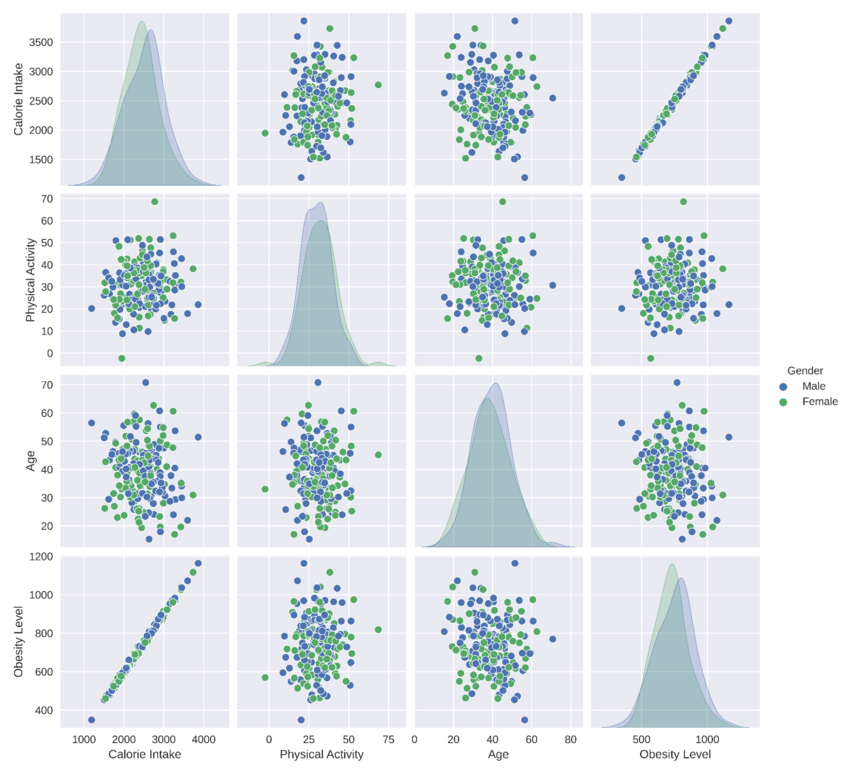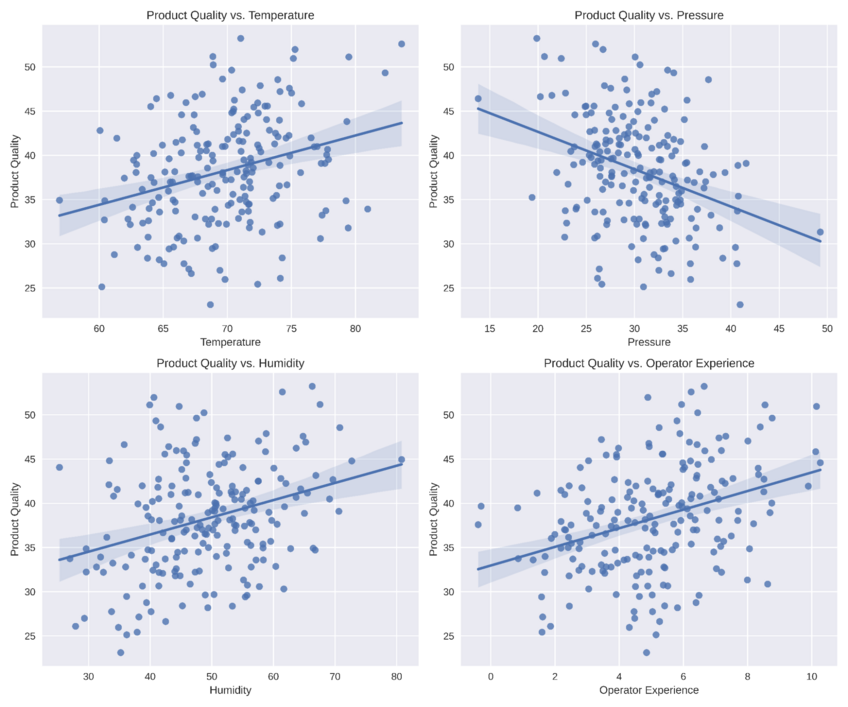July 11th, 2024
What Is Multivariate Analysis in Statistics?
By Connor Martin · 8 min read
Comparison is key to spotting and responding to trends in the world. Certain data and variables only make sense on being compared to others. For instance, obesity levels on their own don’t mean much, but when compared with calorie intake, a picture begins to emerge.
That said, life is more complicated than one cause to every effect. When considering depression, exercise, genetics, and diet’s role in obesity, a more complex picture emerges. This is one example under the broad umbrella of multivariate statistics analysis.
This branch of data analysis is a truly massive topic, with countless models and techniques, but this article will serve as both your introduction and guide.
What Is Multivariate Analysis?
Multivariate analysis is a subsection of statistics, a set of techniques, that analyzes multiple dependent and independent variables and factors and examines their impact on different outcomes.
If that sounds like quite a broad definition, that’s because it is. Multivariate analysis takes many different forms (e.g. structural equation modeling, canonical correlation analysis, etc.), considers any number of variables, and can be used in countless situations. Think of it as an umbrella term.
The one key factor that unites all multivariate techniques is the multiple variables it compares. Univariate analysis analyzes merely one variable and bivariate analysis compares two, but multivariate accounts for any number of variables and factors compared beyond that number. Again, it’s a broad definition.
Why Is Multivariate Analysis Useful?
Comparison is key within statistics. Big pictures and reliable statistics rely on a vast array of data to predict with as much certainty as possible:
- In contrast with univariate and bivariate analysis, multivariate analyses, by comparing several or more factors, can form models of greater complexity.
- It uncovers details, dependencies, and trends within data that other sets of techniques may miss.
- It’s often used in research to explore variable relationships and identify components, classify observations, and predict outcomes based on the information they contain.
Life is seldom simple cause and effect, and multivariate analysis accounts for this.

Pros and Cons of Multivariate Analysis
Just like any discipline in statistics (and life in general), there are both benefits and limitations to the multivariate approach. It may be powerful and allow for more complex understandings of data, but it’s far from a magic bullet.
Pros
Let’s start with the positives:
- Complex relationships – In multivariate analysis, relationships are quantified, especially in comparison with fewer variables. This allows for more realistic models to be formulated.
- Data-driven decisions – Life can never be predicted with 100% certainty, but multivariate analysis will definitely run in at a close second, allowing researchers to make the most informed, holistic interpretations and predictions possible.
- Type 1 error negation – With fewer variables comes the danger of drawing connections that simply aren’t there. With the correlation between multiple variables, this easy pitfall is sidestepped.
- Improved outlier detection – Outliers can skew an entire data set by their distance from other values. Multivariate analysis makes the detection and removal of these troublesome values much easier.
- Better statistical power – When analyzing a few variables at a time, you may miss the connections that can appear in the bigger picture. Multivariate analysis excels at drawing attention to new possibilities that comparisons and context can provide.
Cons
With the many benefits considered, let’s see some drawbacks and limitations:
- Bound by variables – The multiple variables that power multivariate analysis can drive complexity, but also limit it. A predictive model is only as good as the data provided. Scant research or overlooked factors can result in an incomplete picture. What’s more, even with enough variables included, the results can still be confusing, even for the pros.
- Complex – Such complicated multivariate techniques also require complex setups to achieve success. This means large amounts of data, manpower, and robust software. None of those come cheap. This is where powerful machine learning tools like Julius AI can come in handy, cutting down the time and resources needed to process data and generate models.
- Time-consuming – From data gathering to computation, multivariate analysis techniques take time to complete.
Different Types of Multivariate Analysis
Multivariate analysis can be further divided into two methods:
- Dependence methods – Models and techniques in this method rely on variables that are dependent on each other. Emphasis is placed on the effect of variables on each other.
- Interdependence methods – This method doesn’t focus on causal relations between variables, but rather the underlying structure and patterns present in the organization of various factors.
Within these two models are countless multivariate techniques and models for every occasion and discipline. Some popular dependence techniques include:
- Multiple linear regression – This multiple regression analysis technique compares one dependent variable against two or more independent variables.
- Multiple logistic regression – When you need to predict the likelihood of one or more events occurring, this is your multiple regression analysis technique.
- Multivariate analysis of variance (MANOVA) – In this technique, multiple independent variables are tested for their impact on different dependent variables.
Popular interdependent methods include:
- Factor analysis – This technique helps reduce the “noise” of a complex dataset by combining them for greater simplicity.
- Cluster analysis – Like factor analysis, this technique cuts down data noise, but rather by clustering observations than grouping factors.
- Correlation analysis – This technique plays a valuable role in discerning the correlation between variable sets and investigating the relationship between them.
Applications and Examples of Multivariate Analysis
Multivariate analysis is widely used in the world today, wherever complex models and informed predictions are needed. Here are just a few examples:
- Market research – Marketers and companies are always looking for new ways to reach customers and better understand them. Multivariate analysis can help determine behavior patterns through variables like income, demographics, and purchasing history.
- Quality control – To maintain product quality in manufacturing, companies frequently compare variables to optimize processes, spot defect patterns, and control quality.
- Healthcare – Major health trends, including disease treatment, risk assessment, and treatment outcomes all benefit from comparing important health-based variables, like genetics, lifestyle, and disease history.
- Finance – Any investment carries with it a certain degree of risk. By using multivariate analysis, companies can use predictive models based on financial variables (indicators, market performance, etc.) to build comprehensive predictive models.
- Social Science – Understanding how factors impact certain sectors of society based on geography, income, education, and more all help when devising solutions to provide better care and address social care.

How to Conduct Effective Multivariate Analysis
To ensure you’re achieving the most comprehensive results possible with your chosen multivariate technique, you need to ensure a few things:
- Use powerful AI software capable of processing large amounts of data, helping with any request, and providing working models that are easy to share and export.
- Ensure your factors and variables are as large and comprehensive as possible. The software can only work with what you give it.
- Be sure to account for errors and remove outliers to ensure the most accurate picture.
- Conduct hypothesis testing to validate any findings. Predictive models that align with a hypothesis will have a more robust conclusion.
- Remember that correlation doesn’t necessarily mean causation.
Discover How Julius AI Can Make Your Multivariate Analysis Process Better and Faster
The success of any multivariate analysis technique or model relies not only on the data gathered, but the effectiveness of the tools used to put it all together. Julius AI, with its powerful algorithms, allows you to easily analyze your data through computational analysis, bringing you expert insights in seconds.
Not only does it have the power to handle any data set, but it’s also able to respond to your needs through user-friendly chats. Choose Julius AI to have the best partner in data modeling.
Frequently Asked Questions (FAQs)
Which method is best for multivariate analysis?
The best method for multivariate analysis depends on your research objectives and data structure. For predictive modeling, multiple regression techniques like logistic regression work well, while methods like factor analysis or cluster analysis are ideal for identifying patterns and simplifying datasets. Tools like Julius AI can help you choose the right method based on your specific needs.
Is ANOVA a multivariate analysis?
ANOVA (Analysis of Variance) itself is not a multivariate analysis; it is typically used for univariate cases to compare means across groups. However, its extension, MANOVA (Multivariate Analysis of Variance), examines the effects of independent variables on multiple dependent variables simultaneously, making it a true multivariate method.
What is an example of a multivariate statistic?
An example of a multivariate statistic is canonical correlation analysis, which evaluates the relationships between two sets of variables, such as determining how lifestyle factors (diet, exercise) collectively relate to health outcomes (BMI, cholesterol levels). These techniques reveal complex interdependencies often missed in simpler analyses.
